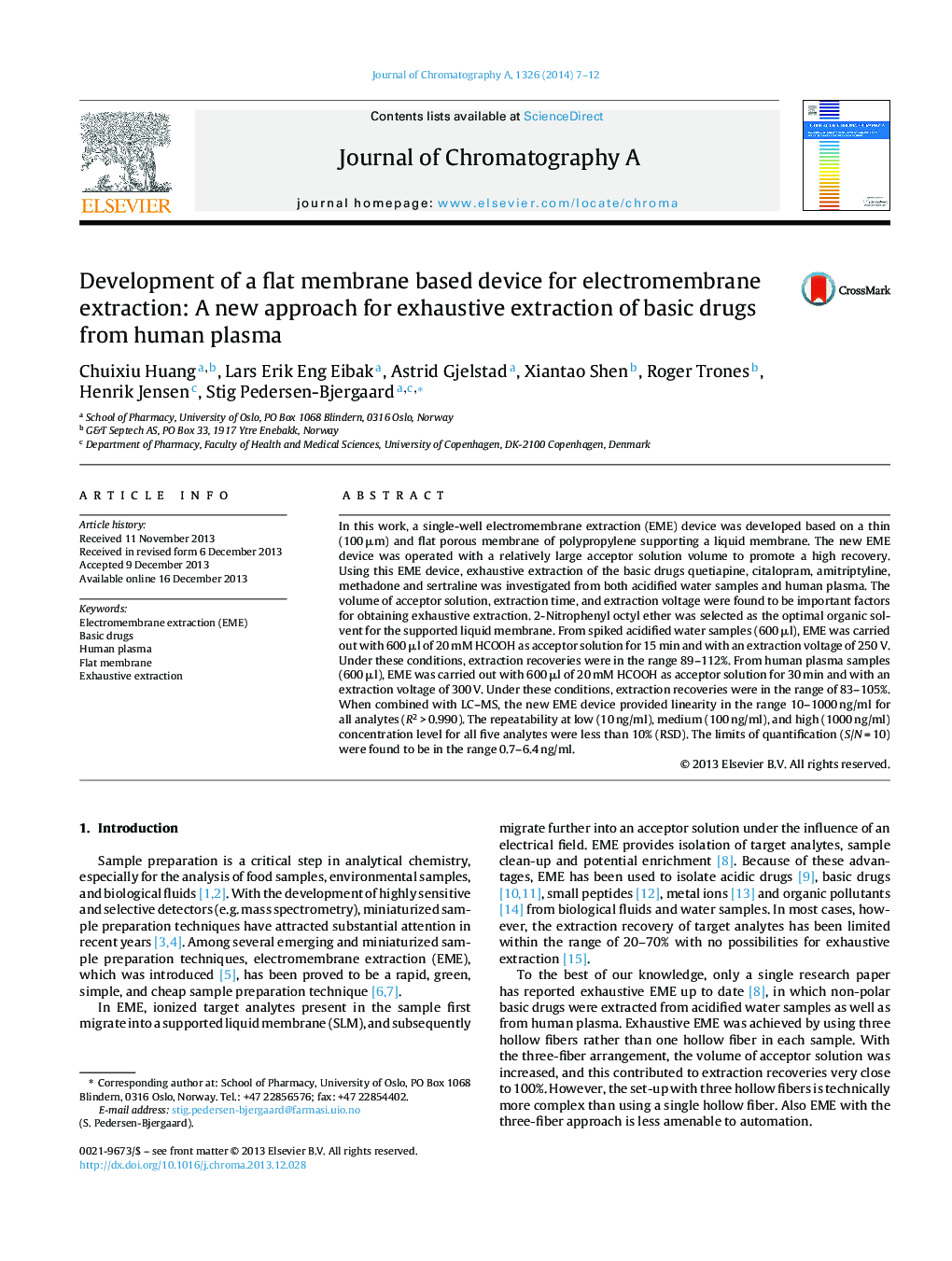| Article ID | Journal | Published Year | Pages | File Type |
|---|---|---|---|---|
| 1200780 | Journal of Chromatography A | 2014 | 6 Pages |
•A technical device for electromembrane extraction was developed.•A thin flat membrane of polypropylene was used to fabricate the device.•Larger acceptor solution volume provided higher recovery.•Exhaustive extraction of the basic drugs from human plasma was achieved.
In this work, a single-well electromembrane extraction (EME) device was developed based on a thin (100 μm) and flat porous membrane of polypropylene supporting a liquid membrane. The new EME device was operated with a relatively large acceptor solution volume to promote a high recovery. Using this EME device, exhaustive extraction of the basic drugs quetiapine, citalopram, amitriptyline, methadone and sertraline was investigated from both acidified water samples and human plasma. The volume of acceptor solution, extraction time, and extraction voltage were found to be important factors for obtaining exhaustive extraction. 2-Nitrophenyl octyl ether was selected as the optimal organic solvent for the supported liquid membrane. From spiked acidified water samples (600 μl), EME was carried out with 600 μl of 20 mM HCOOH as acceptor solution for 15 min and with an extraction voltage of 250 V. Under these conditions, extraction recoveries were in the range 89–112%. From human plasma samples (600 μl), EME was carried out with 600 μl of 20 mM HCOOH as acceptor solution for 30 min and with an extraction voltage of 300 V. Under these conditions, extraction recoveries were in the range of 83–105%. When combined with LC–MS, the new EME device provided linearity in the range 10–1000 ng/ml for all analytes (R2 > 0.990). The repeatability at low (10 ng/ml), medium (100 ng/ml), and high (1000 ng/ml) concentration level for all five analytes were less than 10% (RSD). The limits of quantification (S/N = 10) were found to be in the range 0.7–6.4 ng/ml.
